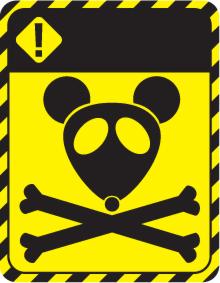Equations are shorthand for words.
The symbols can be so mesmerizing we forget they’re a form of shorthand.
This equation…:

… Is shorthand for these words:
“. . .the net change of a smooth and continuous quantity, such as a distance travelled, over a given time interval (i.e. the difference in the values of the quantity at the end points of the time interval) is equal to the integral of the rate of change of that quantity, i.e. the integral of the velocity,” said Melkana Brakalova-Trevithick, chair of the math department at Fordham University, who chose this equation as her favorite.”1
The equation and the paragraph describe identical truths with two different forms of notation. To the extent the equation represents truth so do the words behind them.
What’s Your Bias?
Which do you trust more: The equation or the words?
Equations seem to have escaped the post-modern distrust of the ability to know absolute truth. They’re more likely to be accepted as truth by contemporary Joe. In Reality, equations and words are equally prone to error.
Sock Loss Index
To advertise a new washing machine Samsung asked a psychologist and statistician to team up and develop a formula to predict the likelihood of losing a sock.
“The probability of sock loss equals the laundry size plus the complexity of the wash minus the product of the level of attention being paid to the task multiplied by the persons attitude towards doing washing.”

Where, ‘L’ stands for ‘laundry size’, based on the number of people in a household (p) with the frequency of washes (f). ‘C’ stands for ‘washing complexity.’ Types of wash (t) is multiplied by the number of socks washed in a week (s). ‘P’, or ‘positivity towards the laundry’ is subtracted from the sum of ‘L’ and ‘C’
Compounding Error
Only one “minor” symbol in an equation, or word in a sentence, need be wrong to invalidate the statements. This has profound implications.
When vetting the underlying truth of a situation it’s often required to combine the vetting of many component truths before putting them all together. A seemingly minor error may compound to dangerously false conclusions. The first result may be only a little off. Over time the conclusions drawn are exponentially wrong.
95% True!
If the sock loss index equation is 95% true you lose a few socks. If the fundamental theorem of calculus is 95% true it means untolled human misery. Some things in life must be 100% pure or they can’t be used, at all.
There’s another name for things that are 95% pure: Poison. Rat poison is 95 – 98% natural food2. With 2 to 5% impurity you don’t even have to wait for the errors to compound. The rat dies in a day.

- “The 11 Most Beautiful Mathematical Equations” (http://www.cbsnews.com/news/the-11-most-beautiful-mathematical-equations/) ↩
- “In a most preferred range, the rodenticide composition can include the natural carrier matrix in a percentage by weight of about 95% to about 98%.” Rodenticide Patent, US 8574638 B1 (http://www.google.com/patents/US8574638). ↩
